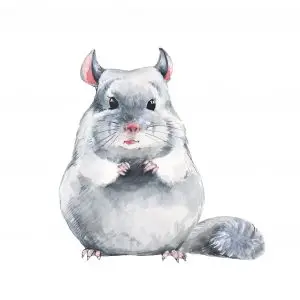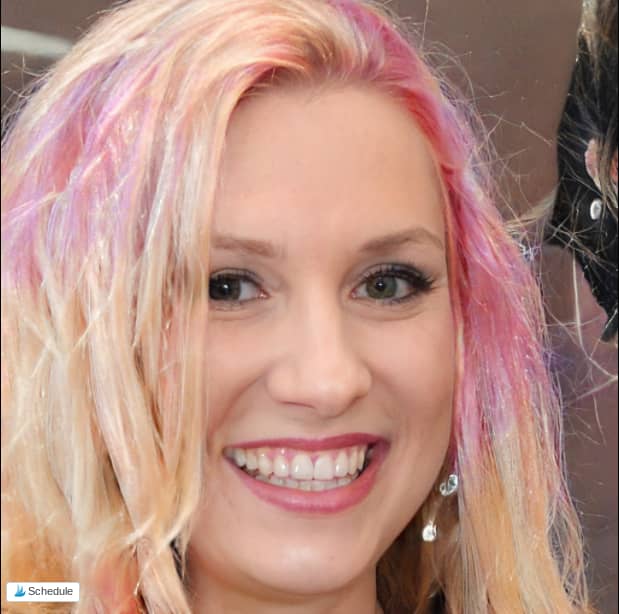The chinchilla has, since its inception, been one of the most beloved domesticated house pets. Its soft fur, playful personality, and cuddly demeanor have made it a hit with children and adults alike, which has led to its increased popularity in recent years.
If you’re planning on getting your own chinchilla, or are simply interested in learning more about them, keep reading…
This is one of our favorite chinchilla drawing tutorials:
Tips Before You Start Drawing
Before you initiate, you should know a few things about drawing chinchillas. For starters, they are smaller than most pets, ranging in size from 7.5-16 pounds when fully grown.
Their bodies are short and squat with large rounded ears that stick out from their body; their back legs are lengthier than their front legs, giving them an awkward gait as they move.
Although they have short tails, both males and females have fluffy fur at the end of their tails (known as furnishing). They live for around 6-8 years but don’t reach maturity until 2 years old or older. Despite popular belief, chinchillas aren’t rodents – instead, they are mammals related to camels and guinea pigs.
This means they can contract rabies, so keeping your pet vaccinated is extremely important! Here are some common ways to draw a chinchilla:
While much more complex than other animals you may have outlined before, drawing a chinchilla isn’t overly complicated – it simply requires patience and attention to detail.
The more practice you get beforehand, the easier it will be. Remember these tips and suggestions when working on your drawings, and share your final results with us!
Develop your Outline with Pencils
Once you’ve written your introduction, step back and put down any thoughts you have on paper. This will help you get things clear in your head.
Next, begin by planning out how many paragraphs and/or steps your writing needs to include for people to understand what you want them to know about whatever topic you’re covering.
Again, jot these ideas down with a pencil on paper – and keep going until it feels complete! Then transfer those notes into a digital format. You can now use Scrivener (for Mac) or Microsoft Word (for PC).
Both of these programs are used by professional writers today, so if you start using them now, there’s less chance of learning curves when you come across more complex tools later on.
Start Drawing in Lightly Using Pencils
Use an H, HB, or B pencil when you start drawing. These are softer than harder pencils, and they’re also smoother, making your lines look more professional. Pencils aren’t available in every color, so make sure you have several of each color.
Using pencils first allows you to go back over any mistakes without ruining your image. To lighten dark spots (shadows), add pressure to create more graphite on your paper. This will work best with an H or B pencil.
For gray tones, lightly lay down several layers of overlapping strokes that run in one direction. Do not blend until you have all the gray tones laid down. Once they are done, blending will be much easier! You may notice tiny little dots where some of your strokes crossed; these are called stippling and can help create darker areas when blending.
Finish with Darker Pencil Lines
To further blend your tone and create smoother, darker lines for your subject, you can use an electric eraser and lightly darken around your issue. This is also an outstanding way to make sure you’ve gotten rid of any stray lines or smudges from your pencils
Don’t press too hard! Just enough so that there are no rough edges or light spots left when you run your fingers over it. It should feel velvety smooth. If you have trouble with blending and lifting out more delicate areas, try using a kneaded eraser instead of an electric one—kneaded ones will not damage your paper as much if you rub them down too hard.
If using one doesn’t seem to work well either, experiment with other types until you find what works best for you.
Add Some Color

If you’re trying to illustrate something, or give your images a little more pop, add some color. This is really easy using GIMP. Add a new coating and set it to Multiply (or any blending mode other than Normal).
Use whatever fill/gradient tool you like—I use Photoshop’s default. Apply it somewhere! Then, lower its opacity until you’re happy with how it looks on top of everything else. You can also adjust curves, levels, and saturation if needed.
I tend to brighten my colors in these areas and bump up shadows and highlights just a tad too. For example, here are a few before-and-after shots.
Finishing Touches (Optional)
Validate your title and description using YET ANOTHER Google search. This time, let’s try A Step-by-Step Guide To instead of just How To. I’ve added an underscore to each word in my title because that helps Google identify it as a phrase. You should do that too.
Don’t forget quotation marks for titles and descriptions! You can also add other variations of your keyword (such as how_to) into different locations in your post itself. Don’t spend too much time on this – you’re only validating that people actually looking for what you’re writing about will actually find it with Google.
Appendix – Materials List For The Most Basic Way to Draw This Chinchilla
1. pencils (2B, 4B, HB and 2H)
2. eraser
3. sketchbook
4. paper
5. ruler
6. kneaded eraser
7. fixative spray
8. mechanical pencil
9. blank notecards
10. brush pen
Baby chinchillas make cute, social pets. But they also have some special needs—they can’t control their body temperature, and they still need lots of cuddling.
If you want to snuggle with your pet 24/7, then get a baby chinchilla. If you think that might get annoying after a while, consider getting an adult chinchilla instead! They are pretty independent animals and will show affection when convenient for them. Your veterinarian may recommend medications or home remedies.
These items can be purchased at local pet stores like Petco or Petsmart. Ask your veterinarian before treatment begins if you have any further questions about caring for your chinchilla.
Hi, my name’s Elena Coolidge, and this is my site. Chinchillas are so cute and such intelligent animals that make great pets. They’ve become the subject of fascination for many animal lovers who enjoy their antics. I blog about their care, where to buy them, breeders, and more. Shoot me an email if you have a question!
